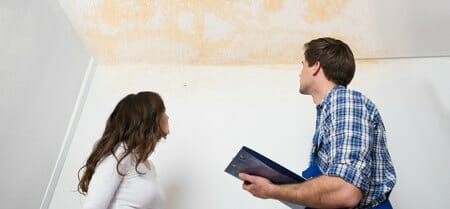Identify the Top Triggers for Water Leakage in Your Home
Identify the Top Triggers for Water Leakage in Your Home
Blog Article
What're your ideas with regards to How to detect water leaks in your home?

Leakages not only cause waste of water but can additionally cause unnecessary damages to your home as well as advertise unwanted natural growth. Regrettably, water leakages may go undetected because a lot of the pipework in our residence is concealed. By understanding as well as looking for day-to-day scenarios that cause leaks, you can secure your residence from future leakages as well as unneeded damage. Today, we will look at six leakage triggers that may be causing your pipes to trickle.
Encroaching origins
Most water leaks start outside the home rather than inside it. You could discover damp patches or sinkholes in your backyard, as well as that could indicate that tree roots are getting into water lines causing water to leak out.
Rusty water systems
As time goes by, your plumbing system ages as well as corrosion such as corrosion may begin eating away the pipes. This may be the cause of discoloration or warping on your pipes. This calls for an examination with your plumber quickly. If our plumbing system is old, think about changing the pipelines considering that they go to a greater danger of rust than the newer versions.
Faulty Pipe Joints
Pipe joints can degrade over time, resulting in water leakages. If you have noisy pipes that make ticking or banging noises, especially when the hot water is turned on, your pipe joints are probably under a whole lot of pressure.
Immediate temperature changes.
Extreme temperature changes in our pipelines can cause them to broaden and contract unexpectedly. This expansion and tightening may cause cracks in the pipelines, particularly if the temperature level are below freezing. It would be best if you kept an eye on how your plumbing functions. The visibility of the previously stated conditions often suggests a high danger.
Poor Water Connectors
Sometimes, a leakage can be brought on by loose hose pipes as well as pipes that provide your devices. Most of the time, changing is what creates the loose water Connections. You may locate in the case of a washing device, a hose pipe might spring a leakage because of drinking throughout the spin cycle. In case of a water connections leak, you might see water running directly from the supply line or puddles around your devices.
Clogged Drains
Clogged drains pipes could be bothersome and also inconveniencing, however they can often end up creating an overflow causing burst pipes. Maintain removing any type of products that may drop your drains that can block them to avoid such hassles.
All the above are root causes of leakages yet not all water leaks arise from plumbing leaks; some leaks could come from roofing system leaks. All leakages need to be repaired quickly to stay clear of water damage.
Leaks not just cause waste of water however can additionally cause unnecessary damages to your residence and advertise undesirable organic growth. By understanding as well as looking for day-to-day scenarios that cause leaks, you can safeguard your home from future leaks as well as unnecessary damage. Today, we will look at 6 leakage creates that might be triggering your pipes to drip.
At times, a leakage can be created by loosened pipes as well as pipes that provide your home appliances. In situation of a water connections leakage, you may notice water running directly from the supply line or pools around your home appliances.
How To Check For Water Leak In Your Home
How To Check for Leaks
The average household's leaks can account for nearly 10,000 gallons of water wasted every year and ten percent of homes have leaks that waste 90 gallons or more per day. Common types of leaks found in the home are worn toilet flappers, dripping faucets, and other leaking valves. These types of leaks are often easy to fix, requiring only a few tools and hardware that can pay for themselves in water savings. Fixing easily corrected household water leaks can save homeowners about 10 percent on their water bills.
To check for leaks in your home, you first need to determine whether you're wasting water and then identify the source of the leak. Here are some tips for finding leaks:
Take a look at your water usage during a colder month, such as January or February. If a family of four exceeds 12,000 gallons per month, there are serious leaks.
Check your water meter before and after a two-hour period when no water is being used. If the meter changes at all, you probably have a leak.
Identify toilet leaks by placing a drop of food coloring in the toilet tank. If any color shows up in the bowl after 10 minutes, you have a leak. (Be sure to flush immediately after the experiment to avoid staining the tank.)
Examine faucet gaskets and pipe fittings for any water on the outside of the pipe to check for surface leaks.
Undetected water leaks can happen without the home or business owner even realizing. If you suspect a water leak, but not able to find the source. It is time to contact a professional water leak detection service, The Leak Doctor.
How To Find a Water Leak In Your Home
https://www.leakdoctor.com/blog/How-To-Check-For-Water-Leak-In-Your-Home_AE197.html

I'm just very fascinated by How to detect water leaks in your home and I hope you enjoyed my blog post. Do you know about somebody who is enthusiastic about Most Common Causes of Leaky Pipes? Take a moment to share it. Many thanks for your time. Visit us again soon.
Visit Our Site Report this page